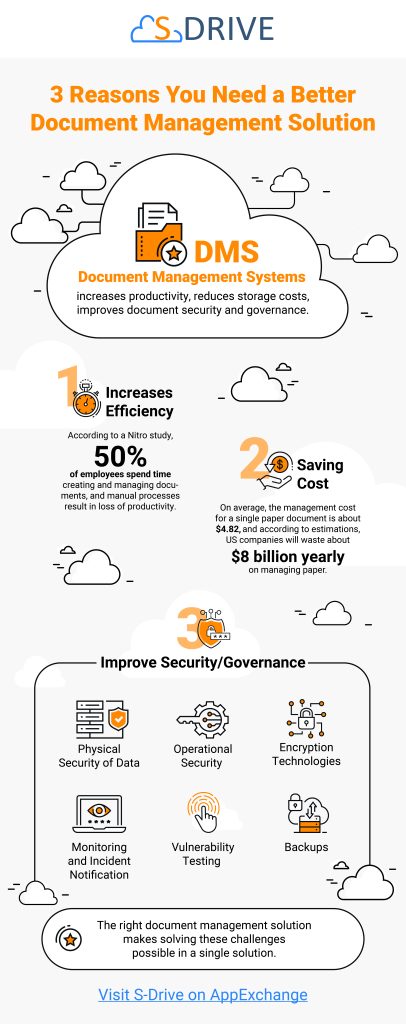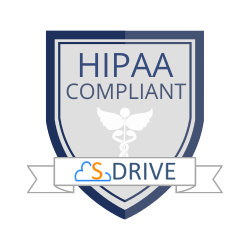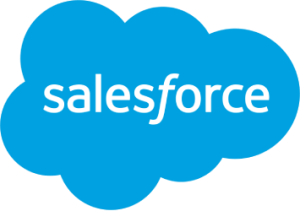No matter the industry or size of your organization, you most likely have a document management solution in place. However, having a solution in place doesn’t mean it meets your needs or is optimized for peak performance. Managing and storing digital and physical files can get messy, and fast. Especially with the importance of security and data privacy increasing almost daily. What do you need to do to build the best document management solution? Let’s start with the basics first.
What is a Document Management System?
A document management system makes it possible to store, track, organize and share all kinds of documents, content, and data in digital format. The main purpose of this system is to help regulate the storage and use of electronic documents. Simple, right? Well, as technology evolves and our world is becoming increasingly digital, the number of electronic files and content has exploded. As we moved to digital-only meetings during the pandemic, the volume of digital assets increased to unprecedented numbers and it’s not slowing down.
The document management systems that have existed for years with features such as searching by content, automatic tracking of document changes and activities, and controlling all versions, are no longer sufficient. It takes more than basic functionality today to effectively manage documents at scale.
Why Do You Need a Document Management Solution?
There is a widespread belief that large businesses working on millions of documents benefit from document management solutions. While this is true, it’s also true that these systems will help organize, secure, and enable businesses of all sizes to manage their documents more efficiently, even small ones. Leveraging the capabilities of a document management system in the digital workplace is what Gartner calls, the “new work hub.”
Creating a document management system allows your employees and teams to work collaboratively on a document wherever they are and whenever they want. This streamlines workflows, increases productivity, reduces storage costs, and improves document security and governance.

Cost savings:
Advantages of a document management solution include cost savings. In years past, the cost of physical storage was significant and a big factor in choosing a solution. It’s an omnichannel world, and storage of digital assets is just as important, if not more than physical assets today. Compliance and regulatory rules dictate processing and storage protocols in certain industries and verticals. And, it is always evolving, so simplifying your document management processes saves time, but also money. Both are too valuable to waste.
Security/Governance:
Keeping documents safe from internal and external threats is essential today. Internal threats include compromising document integrity and sharing, as well as more malicious, external attacks from hackers or competitors. Either way, securing documents and improving the processes required to continue to protect your physical and digital documents is a journey that requires careful thought.
There are several types of security to be considered for documents and their data centers. And all are important for comprehensive protection:
– Physical security of data – Process of protecting physical servers and data centers that house documents and data
– Operational security – Workflow approvals, access control, and audit conformance.
– Encryption technologies – Documented processes, updates, and fail-safe procedures.
– Monitoring and incident notification – Identification, flagging of issues, and reporting protocols.
– Vulnerability testing – web applications and remote access to document tools and platforms
– Backups – what is the policy and how is it regulated and documented?
The right document management solution will make addressing and solving these common challenges possible in a single solution.
How to Choose the Right Document Management Solution
Document management systems today differ for various reasons. Different features and functionality have certain advantages and pitfalls that need to be considered when choosing a solution for your business. Do you need on-prem, cloud-based, or web-based solutions? How will it fit into your existing tech stack? Who owns the selection process and is part of the buying committee making these decisions?
Of course, budget plays a big role in choosing the right document management solution. The pricing of the solution you choose will depend on the deployment architecture to meet your current and future needs. Identify the critical functionality for your needs today and always keep scalability and agility in mind as you look to the future. Integration, ease of use, and cost of implementation should factor into your decision process. If you are a Salesforce.com user, invest in a native app. Time to value matters here and if a solution is too complex, requiring custom code and heavy integration work, you’ll need to factor that into your costs or seek alternative solutions.
There are many great document solutions to choose from that are native to the Salesforce.com ecosystem. Explore your options via AppExchange and find the best solution to support your business today and prepare for the needs of tomorrow.
Ready to get started? Learn about the value of document management solutions like S-Drive on AppExchange today!
About the author: Bulent Dogan is the Founder and Chief Architect of S-Drive. Dogan has worked in the technology industry for more than 20 years. He founded CyanGate in 2007 to provide cost-effective service solutions for OpenText Digital Media Group and SAP DAM. He continues to drive innovation and develop new solutions (OneTeg) and services (S-Drive) to solve evolving customer and industry challenges. Prior to CyanGate, Dogan was also a member of the OpenText Digital Media Group (Artesia DAM) as a Technical Solution Architect.
Read more from Salesforce AppExchange.



